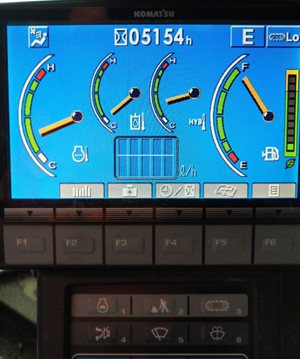Following the introduction of our first Hybrid Excavators in 2012, Brooks Hire has expanded our fleet to stock over 20 hybrid machines, benefiting both our clients and environment alike.
It should come as no surprise that hybrid technologies are becoming increasingly apparent in everyday life, with electric-gas cars, and solar and gas energy plants a thing of the norm. Their undeniable environmental benefits continue to sway the market in favour of lower emissions and cheaper functionality. But how has the use of this technology fared in the construction industry?
What are the Benefits of Hybrid Technologies in Construction?
Primarily, Hybrid machinery has proven to reduce CO2 emissions through their lowered consumption of fuel in operation. The first of the hybrid machines added to the Brooks fleet – the
KOMATSU HB215LC-1 Hybrid Hydraulic Excavator – produces 25% less fuel consumption than its conventional counterpart, ultimately reducing NOx and CO2 emissions. This, followed by an entire range of new hybrid excavators and boom lifts, added to the Brooks selection.
These machines achieve such results through their use of integrated systems, rather than the singular diesel engine, with features including:
- Engine Idle Caution
- Low Emission Engine
- Selectable work modes for large production and fuel saving
- Regeneration of energy, assisting with engine acceleration

Although these machines are environmentally and budget friendly, it would be naïve to shy away from the fact that construction companies require heavy duty equipment that can withstand onsite needs, which diesel machines have proven to provide.
How Hybrid Machines Shape Up Against Conventional Machines
Where it is commonly thought that hybrid machinery is less powerful than those running on diesel, they have, in practice, proven to stand up against their diesel counterparts.
Comparing two machines similar specifications, the maximum bucket digging force of the hybrid HB205-1MO is 13,500 kgf, versus the conventional PC200-8, with its maximum capacity hitting 14,100 kgf. This equates to about a 4.5% difference between the pair.
Although there is a slight reduction of power from the hybrid, Komatsu, Brooks Hire’s leading equipment source, highlight that “in a conventional excavator, engine output is converted entirely into hydraulic energy, with only approximately 13.3% of this energy being effectively used during typical operations.”
This, unlike the hybrid models, which effectively regenerate kinetic energy and store energy to be used by the generator/motor to assist the engine when accelerating. Not only does this regeneration of energy reduce fuel consumption significantly, but it also lessens the wear of the engine, reducing maintenance costs in the future.
And when it comes to fuel consumption, the hybrid is undeniably better “bang for your buck”. The original EX149-KOMATSU HB215LC-1 design was seeing “about 9 litres an hour, as opposed to a conventional machine which is up to 14 litres an hour”, shared one Brooks customer in the Pilbara region of WA. Not only does the lower fuel consumption save money when filling up, but in the task of filling up itself; with less trips to the fuel pump required, the machine can spend longer out in use, generating money for the company.

What We Can Expect Going Forward
Since introducing hybrid technologies into the Brooks Hire fleet, there has been a clear shift in the perception of these machines, for the better. With benefits not only for the environment, but an increase in monetary savings, the slight power variation of the machines is what prevents them growing in popularity, more rapidly.
As increased research and development go into hybrid technologies, the improvements from the original design and current market offering, have rapidly advanced. Such leaps in their innovation, make these machines exciting placeholders of what is to come in the earthmoving and construction industries. One which Brooks hopes to continue to pursue.